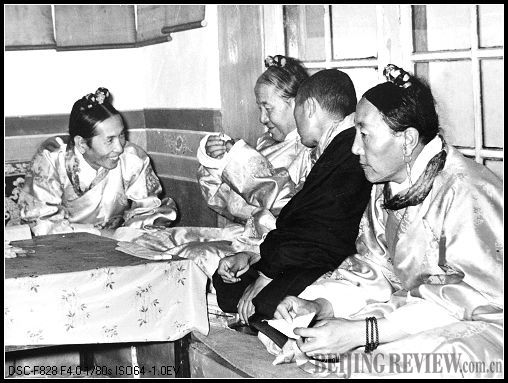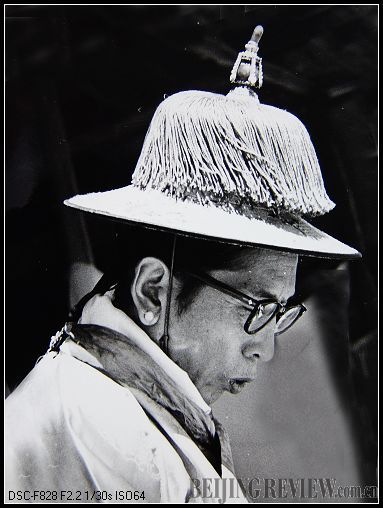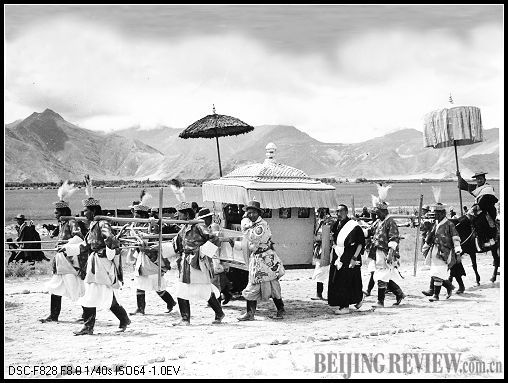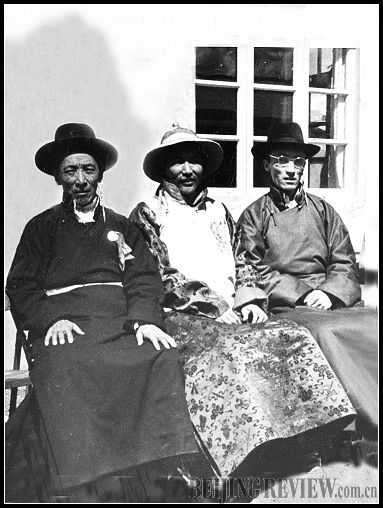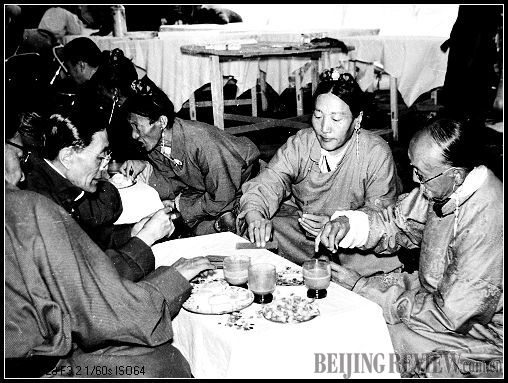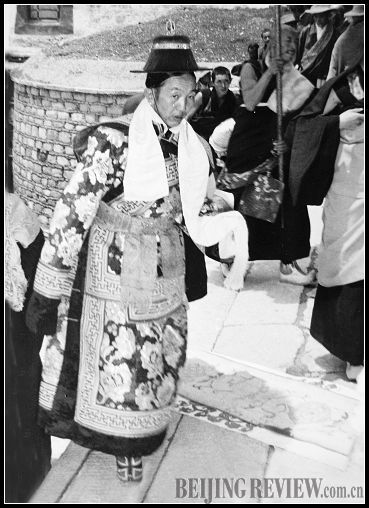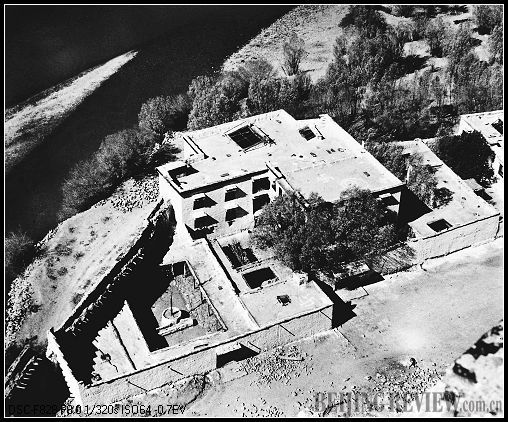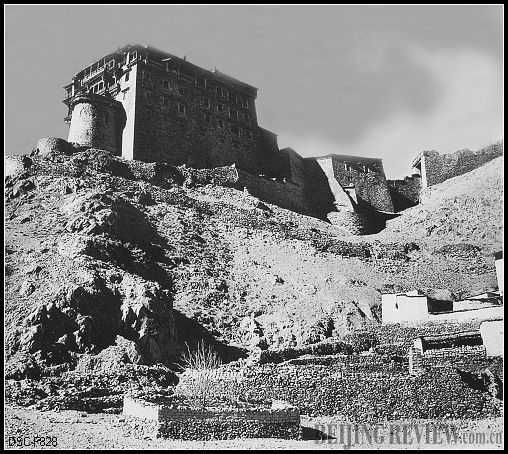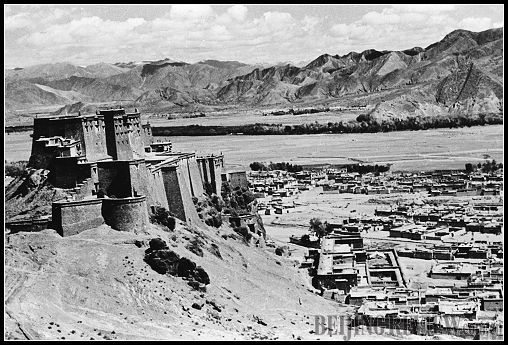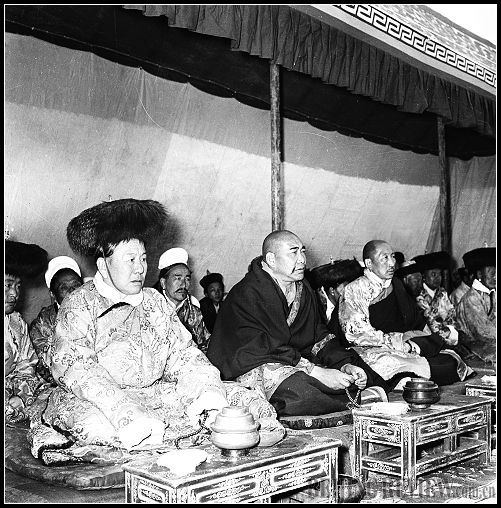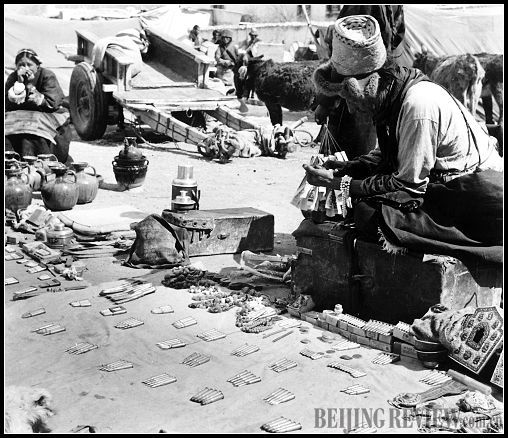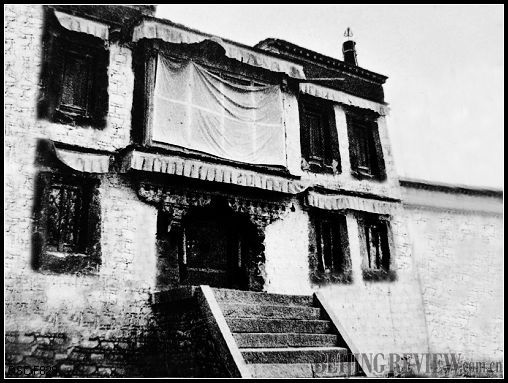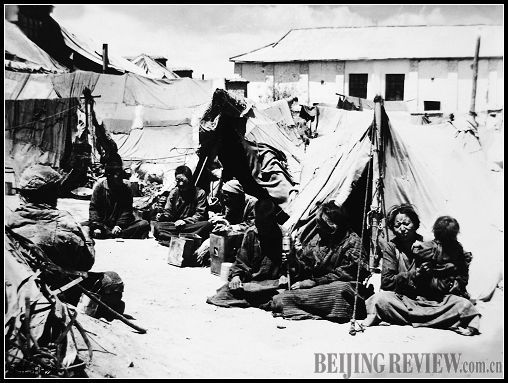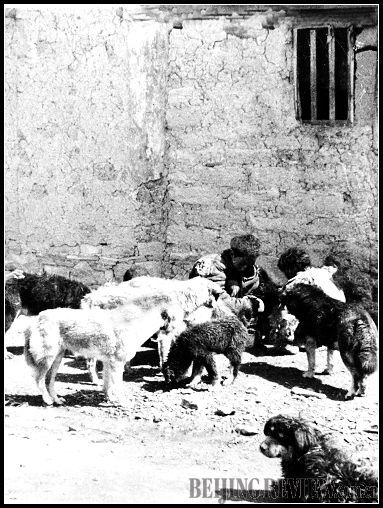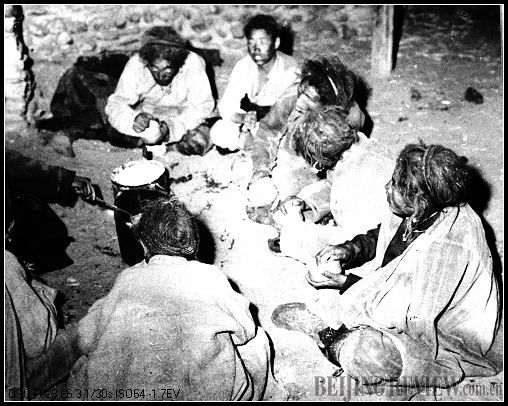Meeting
The four Galoins of the Gashag government--Ngapoi Ngawang Jigmei, Siangar Chomei Dorje, Liushia Tubdain Tarpa, and Sangpo Cewang Rinzin (from left to right)--handled public affairs in their office in the Norbu Lingka (1957)
Ngapoi Ngawang Jigmei
Ngapoi Ngawang Jigmei (1956)
Potala Palace
Built during the period of Tubo King Songtsan Gampo in the 7th century, the Potala Palace (here seen in 1956) was originally called Red Hill Palace Castle (Phodrang Marpa Trize in Tibetan). Wind, rain, lightning and war eventually destroyed the old palace. In the early Qing Dynasty, led by the Fifth Dalai Lama Ngawang Lobsang Gyamco, the Potala Palace saw large-scale extension, reaching its present-day grandeur
Yellow Carriage
Midday in early Autumn 1958. At the northern end of the Lhalu Wetland and two sides of a road at the southern foot of Sera Woze Mountain in the northern suburbs of Lhasa is a "holy road" marked with stones. A stately, solemn procession of people is slowly advancing on the desolate earthen road clustered around a carriage covered with yellow brocade. Before the carriage, a person holds a peacock umbrella. A valance-like umbrella is pulled off over the carriage and rotates ceaselessly. The carriage and two umbrellas were specially used when a reincarnated Living Buddha went on a trip
Officials
Officials with the Checho office in Nagqu (1957). In 1956, the Tibet Autonomous Region Preparatory Committee decided to set up the Hehou Checho Office. Checho was equivalent to a local body of a special administrative area. The office comprised officials ranging from the fifth to seventh ranks. These officials were often local monks and lay aristocrats, who were responsible for administration, law enforcement, tax collection and military and political affairs
Leisure
Aristocrats drinking tea while playing cards under the tree in the Shocha Lingka. Right to left: Garsoi Qoigyi Nyima (Garshopa), Sangpo Cewang Rinzin, Chuike Toinzhubp Tsering, and Chamlechin Soinam Gyibo (1956)
Aristocracy
The Soikang family, self-styled as descendents of the 4th Dalai Lama, had many manors and wealth in Tibet, creating a powerful and distinguished hereditary aristocracy
Lhaze Zong Castle
The Lhaze Zong Castle (1957). Zong originally meant castle or stronghold. After Qamqoi Gyaincain became Tibet King in 1358, he proclaimed a series of laws and reform policies. Among them, the establishment of the Zong exerted great influence on later generations
Gamba Zong Castle
Gamba Zong Castle (1957)
Xigaze Zong Castle
The Xigaze Zong Castle (1957). It is located in the southwest of the place where the Brahmaputra and its tributary Nyang Qu River converge, at an altitude of 3,800 meters. Xigaze Zong Castle, called Sangzhoze Castle in ancient times, was built by King Qamqoi Gyaincain in 1354
Gashag Government
The three people in the front row in the picture are monk and lay officials in the Gashag government. Right to left: Siangar Chomei Dorje (Shasoi), Lobsang Zhaxi , Liushia Tubdain Tarpa. The Gashag government was composed of members from the upper classes of monks and laymen, who represented the will and interests of the aristocrats
Ammunition Peddlers
Peddlers publicly vend ammunition in Chomsekung Market on Barkor Street while local authorities turn a blind eye (1956)
Namzesha
Namzesha, was a body managing downtown Lhasa in the past. Its functions were to arrest and imprison violent criminals and thieves as well as levy taxes on businessmen (1956)
Harsh Life
Groups of beggars in the Bam (Beggar) Village in Lhasa (1956)
Fighting
A little serf who strayed onto the street was so hungry that he fought with dogs for food (1956)
Serfs' Dinner
During the busy farming season, serfs in the Chinlung Manor labored ceaselessly from daybreak until late at night before they each could get a meal of pea glutinous rice cake (1957)
